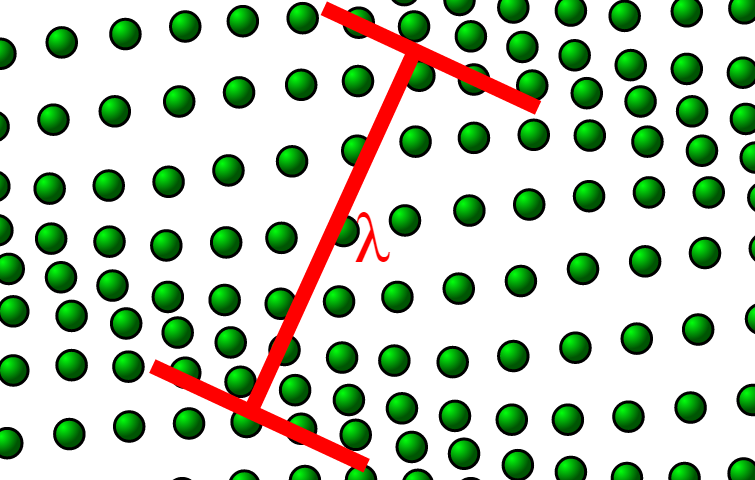Phonon propagating through a square lattice (atom displacements greatly exaggerated). Credit: Wikipedia
(Phys.org)—A team of researchers working at Osaka University in Japan has devised an experiment that gave results showing that phonons mix in such a way that they can be now be classified as 'bosonic' particles. Dave Kielpinski with Hewlett Packard Laboratories, offers a News & Views piece on the work done by the team and explains how it relates to work done with photons and other quantum particles.
At the heart of the new research, is the idea of interference—as Kielpinski notes, there are two kinds involved with sound waves—constructive (where sounds waves reinforce each other) and destructive (where they cancel each other out) and a principle of quantum mechanics that says when the number of particles in a system is known, the hills and crests cannot be accurately predicted. Prior work with photons and other quantum particles has revealed many of their characteristics, now, in this new effort the researchers set about building an experiment that demonstrated these principles as they apply to phonons.
They did so by first trapping two calcium ions in a vacuum chamber where laser cooling was used to prevent residual thermal vibrations by the ions, thus allowing only quantum vibrations to be part of the experiment. Next they fired laser pulses at the ions which allowed for adding or removing vibrations, a single phonon at a time. They also fired pulses in a way that caused the ions to fluoresce when they were vibrating—for use as an optical marker. Then to observe the interference that occurred, the team sent one phonon to both of the ions—because of their positive charge, they of course repelled each other. But doing so also caused one to vibrate while the other barely wiggled, resulting in a degree of interference. The researchers report that in most cases, both of the phonons wound up on the same atom—as quantum mechanics predicts, but only so long as no one actually measures the location. The added interference step suggested that the phonons could reside on two different atoms at once.
The results of the experiments done by the team provide proof of quantum sound theory and also show that phonons are most certainly, bosons, not fermions.
More information: Kenji Toyoda et al. Hong–Ou–Mandel interference of two phonons in trapped ions, Nature (2015). DOI: 10.1038/nature15735
Abstract
The quantum statistics of bosons and fermions manifest themselves in the manner in which two indistinguishable particles interfere quantum mechanically. When two photons, which are bosonic particles, enter a beam-splitter with one photon in each input port, they bunch together at either of the two output ports. The corresponding disappearance of the coincidence count is the Hong–Ou–Mandel effect. Here we show the phonon counterpart of this effect in a system of trapped-ion phonons, which are collective excitations derived by quantizing vibrational motions that obey Bose–Einstein statistics. We realize a beam-splitter transformation of the phonons by employing the mutual Coulomb repulsion between ions, and perform a two-phonon quantum interference experiment using that transformation. We observe an almost perfect disappearance of the phonon coincidence between two ion sites, confirming that phonons can be considered indistinguishable bosonic particles. The two-particle interference demonstrated here is purely a quantum effect, without a classical counterpart, hence it should be possible to demonstrate the existence of entanglement on this basis. We attempt to generate an entangled state of phonons at the centre of the Hong–Ou–Mandel dip in the coincidence temporal profile, under the assumption that the entangled phonon state is successfully generated if the fidelity of the analysis pulses is taken into account adequately. Two-phonon interference, as demonstrated here, proves the bosonic nature of phonons in a trapped-ion system. It opens the way to establishing phonon modes as carriers of quantum information in their own right, and could have implications for the quantum simulation of bosonic particles and analogue quantum computation via boson sampling.
Journal information: Nature
© 2015 Phys.org




















